Intramuros: Festival city

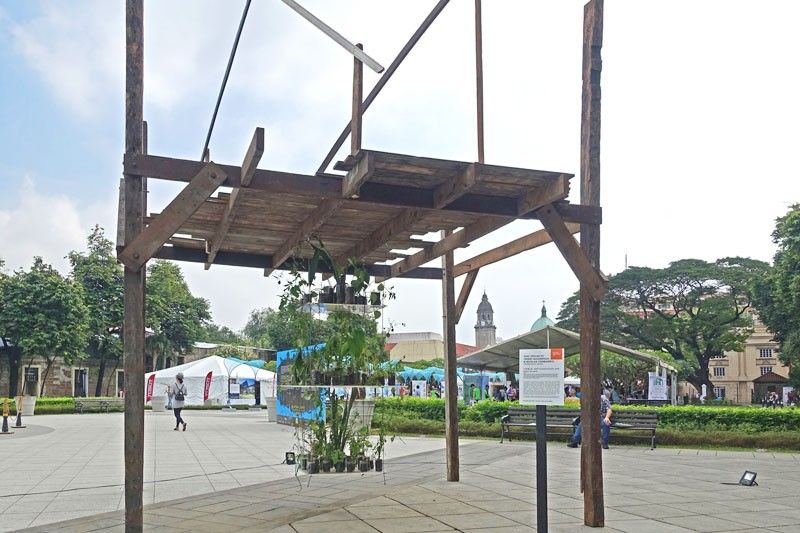
Manila Biennale installation by Nicolas Combarro and Wawi Navarroza, "Visible: Self Construction and Wild Growth"
February is the month of arts and romance. There is not a more interesting place to celebrate it than within the old walled city of Manila. The last few weeks have seen several cultural events that have brought Intramuros, and the larger historic district it is located in, back into public focus.
The first event was a visit from students and faculty of the renowned Harvard Graduate School of Design (GSD). Last Feb. 6 saw a whole-day event that sought to enliven the discourse on Manila’s urban predicament. Various local experts in urban planning, as well as by the visitors from the US, shared their insights into Manila.
“Manila: Future Habitations” was held at historic Marble Hall in the Ayuntamiento de Manila building, courtesy of the Intramuros Administration and the National Treasury, which calls the heritage structure home. Over 500 professionals in design, as well as students, attended the affair. I will write more about the event and the contributions of the American and Filipino alumni of the Harvard GSD next week.
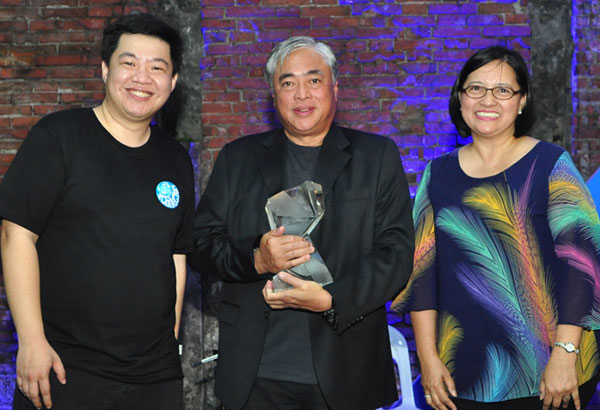
2018 MADE Anthology Architecture prize winner Jorge Yulo, William Ti Jr. and Irene Labitad
Overlapping with this first event was the launch of the first Manila Biennale. Ongoing until March 5, the public spaces of Intramuros have become settings for art installations and performances.
A good friend, and the prince of Intramuros, Carlos Celdran, is always finding ways to bring back life to this most forgotten of places. His quirky tours and fantastic performances have braced the narrative of Intramuros and convinced a new generation to walk its streets. But he knew the place needed more.
Few of today’s metro-Manilans know that the Walled City is not just, well, walls. Several plazas and gardens dot the 60-odd hectares of the district. These are spaces just waiting to be filled with life… and arts. Carlos declared, “Manila is a dead city and it’s not going to be saved by the church but by the arts.” So the Manila Biennale was born.
The theme he and fellow curators Alice Sarmiento, Con Cabrera, Ringo Bunoan, and Cocoy Lumbao chose for the Manila Biennale 2018 is “Open City,” a reference to that key chapter of Intramuros’ history when it was last whole. It is also a reference to the city’s primacy as a center of culture and trade, a role we all need, he says, to rediscover. This primacy is the essence of Intramuros’ soul.
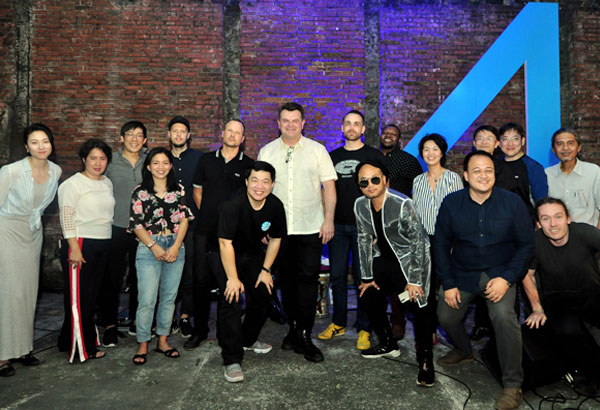
Anthology gala dinner: Yifei Li, Irena Gunawan, H Koon Wee, Rebecca Plaza, Chris Precht, Chris Bosse, William Ti, Jr. Kai-Uwe Bergmann, Florian Heinzelmann, Jefre Manuel, Dawveed Scully, Eunice Seng, Sudarshan Khadka, Takashi Niwa, Gerard Uymatiao, Alexander Furunes, Norman Muana
The Manila Biennale, as the curators’ manifesto declares, is a non-profit event, situated in Intramuros and the historical core of Metro Manila. It “advocates art which is site-specific and in dialogue with the histories of Intramuros.” Carlos explained that the biennale “shall focus on the issues and agendas of artists, art production, and art processes and shall be artist-curated, artist-run, and artist-centric.”
Proof of this manifesto can be had by visiting Intramuros and experiencing the works of Agnes Arellano, Lena Cobangbang, Tad Ermitaño, Alwin Reamillo, , Kawayan de Guia, Gerardo Tan, Boni Juan, MM Yu, Carina Evangelista, Mideo Cruz, Maria Cruz, Elnora Ebillo, Boni Juan, Wawi Navarrosa, Nicolás Combarro, and Alwin Reamillo among others.
I managed to view a number of the installations myself while also participating in one of its key events — Anthology Festival 2018. The festival is a celebration of architecture and urbanism. Organized by the swashbuckling architect William Ti, the festival is unique in its focus on design as a social process and product.
William is of the belief that “Social architecture is about engaging society at large and giving open access to all.” He explained that the festival “seeks to reveal and pronounce what architecture can be — that architecture belongs to all of us, and every person should be empowered to imagine a better place.”
This is the third edition of the annual festival, which had always been held at the Intramuros. I missed the first two but promised myself that I would not let the 2018 get past me. It helped that I was invited to give a talk about urbanism.
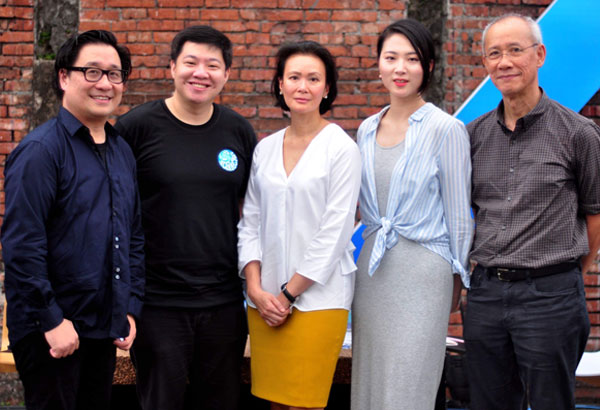
Lyndon Neri, William Ti Jr., Anna Sy, Yifei Li, Bong Recio
The festival had exhibits, talks, workshops and dialogues, all set in spaces at Fort Santiago. The festival’s list of speakers was long, over two dozen, and included Filipino master architects Jorge Yulo, Dominic Galicia, and Bong Recio, young turks Sudhar KahdkaJason Buensalido, globally-famous Shanghai-based Lyndon Neri, and other speakers from four corners of the globe.
It was an embarrassment of riches for those that ventured to the Intramuros for the three-day event. There were workshops on architectural sketching, metal and masonry work from the Escuela Taller de Manila, and an interesting project ksiosk featuring documentation of heritage buildings via 3D printed scale models.
The festival also organized several design and creativity competitions along with an architectural award in partnership with the Metrobank Foundation. The Metrobank Art and Design Excellence Anthology Architecture Awards night was the culminating event of the three hectic days of the festival. The Architecture Prize was given to Jorge Yulo & Associates for The Hacienda Community House.? The other winners were The Treeline House by Baad Studio, The Terraces at Dao by Buensalido + Architects?for the commercial category and Museo Kordilyera by 90 Design Studio?for best institutional project.
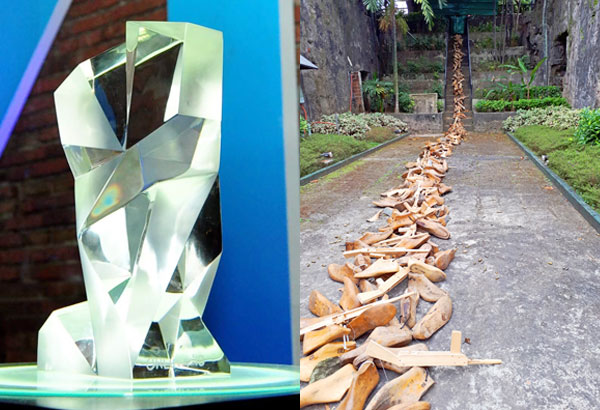
The Architecture Prize was embodied in a magnificent creation called “Clrus” by Ramon Orlina (an architect himself). The awards in the other categories were given the lovely piece “Dynamic Movement” by Ronald Castrillo.
Visit Intramuros now, the Manila Biennale has over a week left. Visit often after that, as the ancient walls now reverberate with a passion that Manilans like Carlos and William are filled with. Intramuros has become a festival city. All it takes is people and the arts, community and culture, and a magnificent backdrop filled with history.
* * *
Feedback is welcome. Please email the writer at paulo.alcazaren@gmail.com.



















